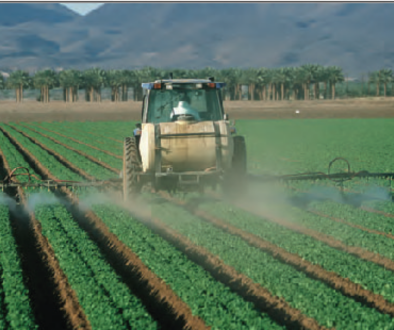Something Smells Rotten in the Peanut Problem

So I watched Part 2 of Rotten about food allergies. And I have some questions. So I’ve put them into the production team and am waiting to hear back.
I adore Ming Tsai, truly love that man. I was just with him in his restaurant, Blue Dragon, in the fall. If you are ever in Boston, please eat there. And I bow down to the families who came forward for the film. That half of the segment is incredible.
But boy, does the other half come across as a pitch for peanut farmers, and I have serious questions as to the funding and a BIG ASK.
Why no allergist? No allergist interviewed in the section? Why no discussion about the ways that the farmers farm? No discussion. None. It’s a pity party there. And that is a peanut problem.
The film paints a very clean picture of peanut farming, with beautiful green fields, and a dad and daughter. I mean, let’s pull those heart strings for these two. And as someone who is named after a farmer, I bow to the farming efforts.
But to fail to highlight exactly how peanut farming happens? The record amount of pesticides, fungicides, herbicides and other methods used to grow those products? The crop rotation that can occur with genetically engineered cotton? One of the most highly polluted crops? To not bring that discussion into the microbiome discussion is irresponsible.
Most of the peanuts consumed in the U.S. are now one of the most pesticide-contaminated snacks we eat. The USDA Pesticide Data Program found 8 pesticides on peanut butter. Piperonyl butoxide was found 26.9% of the time.
 According to the National Pesticide Information Center, piperonyl butoxide is considered a possible human carcinogen based on limited evidence of cancer in laboratory animals. Piperonyl Butoxide (PBO), a highly toxic substance that causes a range of short- and long-term effects, including cancer and adverse impacts on liver function and the nervous system, is one of the most commonly used synergists in pesticide products. Synergists are chemicals added to pesticide formulations to enhance the toxicity of the active ingredients.
According to the National Pesticide Information Center, piperonyl butoxide is considered a possible human carcinogen based on limited evidence of cancer in laboratory animals. Piperonyl Butoxide (PBO), a highly toxic substance that causes a range of short- and long-term effects, including cancer and adverse impacts on liver function and the nervous system, is one of the most commonly used synergists in pesticide products. Synergists are chemicals added to pesticide formulations to enhance the toxicity of the active ingredients.
According to farmers, “Peanuts are raised in the part of our country where peanuts are a rotation crop with cotton. Most of the cotton is glyphosate tolerant and receives numerous glyphosate applications per year. Glyphosate severely damages the beneficial microorganisms in the soil. This leads to an increase in the population of opportunistic or bad organisms in the soil. The bad organisms cause an increase in the number of diseases that will adversely effect the peanut crop. This leads to an increased use of insecticides and fungicides on the peanut crop. It is common to see a conventional peanut crop sprayed with some type of pesticide every 8-10 days during the growing season.”
It is also incredibly irresponsible to solely focus on peanut here when the number of deaths due to milk allergy are exploding. It has me wondering if perhaps the dairy industry is going to fund the next food allergy film with idyllic pastures of cows rather than the CAFO’s that are now part of industrialized dairy?
Are we allergic to food or to what’s been done to do?
And when a doctor is paid mightily by Mylan and fails to disclose those payments prompts parents to reach out, it leads to some big questions?
So that is my peanut problem.
What money was behind this film? Still waiting to hear back.
It’s easy to be misled in this space. Many of us entered into it optimistically, only to realize just how much money is flowing through non-profits and doctors’ offices, without full disclosure. When critical conversations are muted, it’s important to remember what Enron once reminded us to do, “Ask why.”





